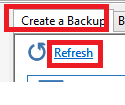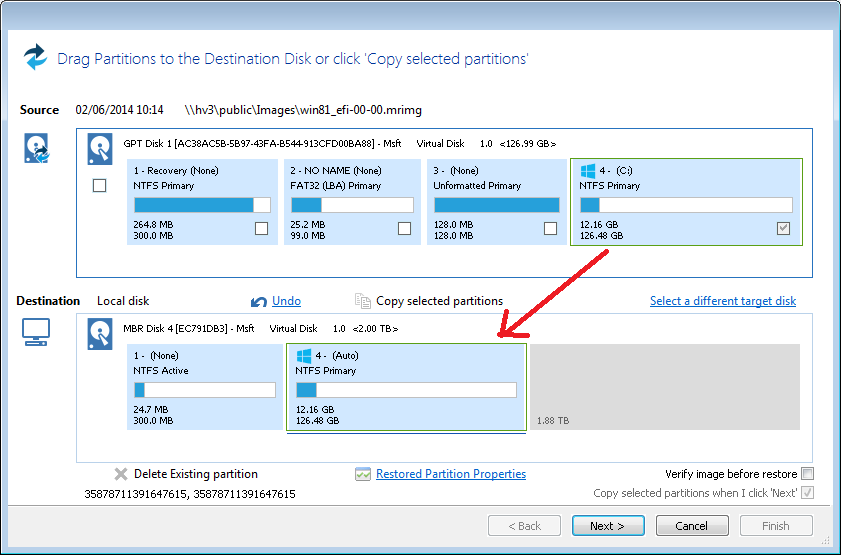The Unified Extensible Firmware Interface (UEFI) is an interface between a computer's firmware and operating system. It is designed as a replacement for Basic Input/Output System (BIOS). UEFI supports hard disks with either master boot record (MBR) or the newer GUID Partition Table (GPT) system. GPT is a newer standard that supports disks larger than 2TiB and allows for more than four primary partitions per disk.
This article covers restoring a disk image of a UEFI/GPT system and enable the restored image to boot using legacy MBR booting.
We assume there are no other hardware differences between the system being imaged and the system being restored to. For dissimilar hardware, use ReDeploy.
1. Boot into Windows PE.
2. Open a Windows command prompt. To open a command prompt, click the ![]() icon on the taskbar.
icon on the taskbar.
3. Type:
diskpart
4. Type:
list disk
5. Select the disk number that you want to restore to. For example:
select disk 3
Ensure that the correct disk number is used in the command above, as following commands will destructively remove data from the select disk.
6. Clean the selected disk:
clean
7. Ensure that the target disk is MBR formatted:
convert mbr
8. Create the Microsoft System Reserved partition:
create par pri size=300
9. Format the Microsoft System Reserved partition:
format fs=ntfs quick
10. Set the partition to 'Active':
active
11. Exit from Diskpart
exit
12. In Macrium Reflect, select the 'Create Backups' tab.
13. Click 'Refresh' to read the newly initialized disk:

14. Click the 'Existing Backups' tab.
15. Select the image file, drag and drop just the Windows System partition to the free space on the target disk. In this example, only the 'C:' partition is restored to the target disk.

You can click 'Restored Partition Properties' to resize the restored partition to fill any unpartitioned space on the new disk.
16. Follow the steps in the section Fix boot problems on MBR/BIOS systems in the following KB article.
17. When running 'Fix Windows Boot Problems' ensure that the newly created 300MB partition is selected as the 'Active' partition